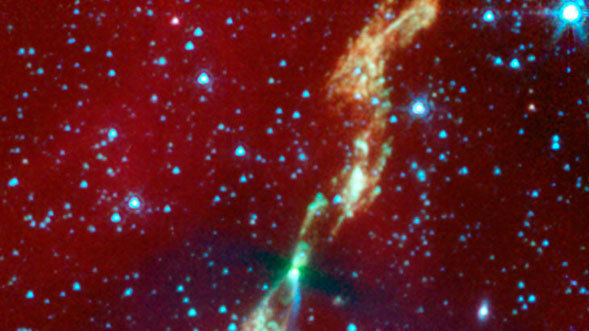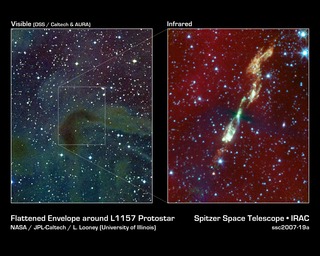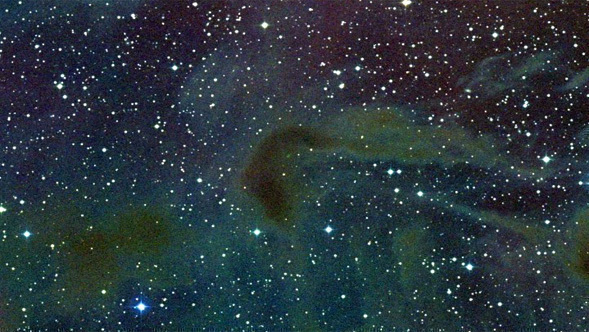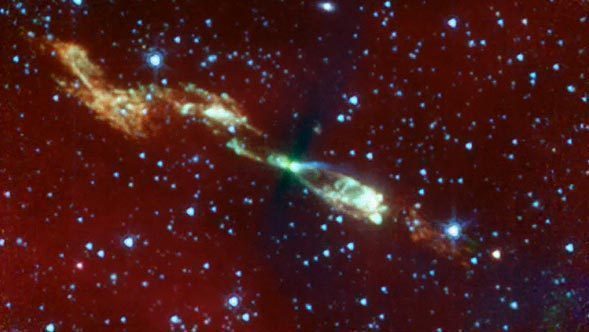Pulling Back the Curtain of Dust
Science Animations Video • November 29th, 2007 • ssc2007-19v1
This artist's animation begins by showing a dark and dusty corner of space where little visible light can escape. The animation then transitions to an infrared view taken by NASA's Spitzer Space Telescope, revealing an embryonic star with dramatic jets. This infrared portrait gives us a rare look at what our own solar system looked like billions of years ago.
Stars form out of spinning clouds, or envelopes, of gas and dust. As the envelopes flatten and collapse, jets of gas stream outward and a swirling disk of planet-forming material takes shape around the forming star. Eventually, the envelope and jets disappear, leaving a newborn star with a suite of planets. This process takes millions of years.
The Spitzer image shows a developing sun-like star, called L1157, that is only thousands of years old (for comparison, our solar system is around 4.5 billion years old). Why is the young system only visible in infrared light? The answer has to do with the fact that stars are born in cocoons of dust that block visible light. But the heat, or infrared light, of an object can be detected through the dust.
In Spitzer's infrared view of L1157, the star itself is hidden but its envelope is visible in silhouette as a thick black bar. While Spitzer can peer through this region's dust, it cannot penetrate the envelope itself. Hence, the envelope appears black. The thickest part of the envelope can be seen as the black line crossing the giant jets. This L1157 portrait provides the first clear look at stellar envelope that has begun to flatten.
The color white shows the hottest parts of the jets, with temperatures around 100 degrees Celsius (212 degrees Fahrenheit). Most of the material in the jets, seen in orange, is roughly zero degrees on the Celsius and Fahrenheit scales.
The reddish haze all around the picture is dust. The white dots are other stars, mostly in the background.
L1157 is located 800 light-years away in the constellation Cepheus.
The Spitzer image was taken by the telescope's infrared array camera. Infrared light of 8 microns is colored red; 4.5-micron infrared light is green; and 3.6-micron infrared light is blue.
The visible-light picture is from the Palomar Observatory-Space Telescope Science Institute Digitized Sky Survey. Blue visible light is blue; red visible light is green, and near-infrared light is red.
Video Credit: NASA/JPL-Caltech/UIUC & Caltech/AURA







